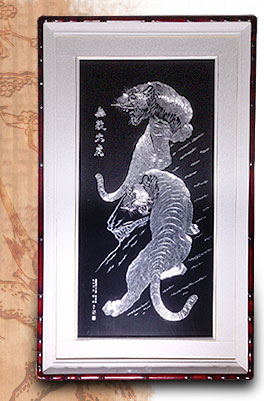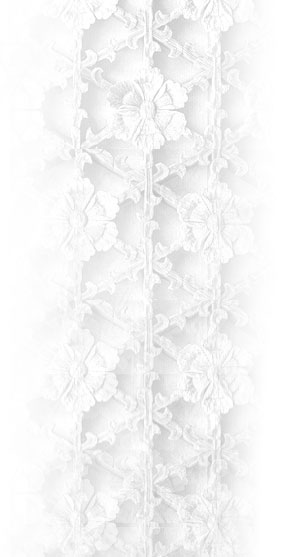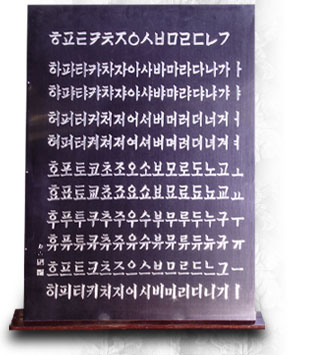For Kim Cheol-ju, looking at his father lost in making a wealth of wonderful metal objects was a great joy of his childhood. He was fascinated by the beautiful designs that his father engraved onto hard metal plates such as gold, silver, bronze and even aluminum. Even at a very early age, he began to envy his father’s skills and decided to follow his father’s career. A difficult learning period followed, during which his father often scolded him for ruining valuable materials due to too much ambition yet a lack of skill. But gradually his hard work began to yield results; his father’s anger turned to smiles, and he became a successful descendant to the one of the day’s finest artisans specializing in traditional Korean metal crafts. Kim Cheol-ju eventually mastered the skills and techniques of traditional metalwork his father taught him, and began to teach traditional metal crafts at colleges and universities. At the same time, he continued to make fine pieces of traditional metal work for which he was awarded prizes in many arts and crafts shows. In 1989, a year after his father’s death, he received the honorary title, Master Craftsman of Metalwork, that his father had held before him. Since then, Kim has made outstanding achievements in the designs and forms of metalwork, creatively combining traditional methods and practices with modern art. The works of Kim are largely divided into two categories: houseware, such as jewelry boxes, vases, incense burners, kettles and cups; and plaques, mostly made from aluminum and engraved with images and calligraphic works. He exploits a variety of traditional designs including those of Chinese characters with auspicious meaning such as Su (‘long life’) and Bok (‘fortune’), arabesques, sagunja (‘four noble creatures’), sipjangsaeng (’10 symbolic creatures of longevity’), landscapes, hwajo (‘flowers and birds’), bats, dragons, phoenixes and tigers. In order to engrave these diverse designs he uses approximately 250 chisels that are divided according to their function and size, most of which are only about 5cm in length. The traditional metalwork techniques Kim uses are largely classified into five categories: the most basic technique of seongak (‘line engraving’); the hwagak (‘flower engraving’) approach used for brush-stroke effects; the gogak (‘tall engraving’) method used for creating three-dimensional effects; the tugak (‘openwork carving’) technique; and the most difficult yukgak (‘flesh carving’) technique used for creating three-dimensional effects by hammering both sides of a metal plate. The greatest of all his techniques is the practice of inlaying gold or silver into a metal surface to create forms and designs that display delightful vitality, like a living thing. It usually takes from one month to several years for Kim Cheol-ju to produce a fine piece of metal work. The most important element for making a great work is giving his full attention and focus to what is being done, because even a moment’s distraction can lead to a wrong line, which then can ruin the entire work and make him start all over again. That is why he often compares the process of his work with a constant fight he has with his mind for full mental and emotional control. |
|||||||
Kim Cheol-ju, Master Craftsman of Metalwork, is working with a small hammer and a chisel, engraving a dragon design onto the metal surface of a household item. View the master's works |
|||||||
|



















